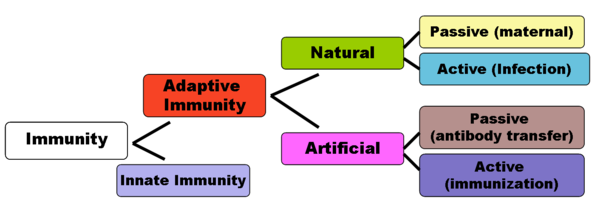ایمونولوژی
ایمنی شناسی پزشکیایمونولوژی
ایمنی شناسی پزشکیOpen-access journal
Open-access journals are scholarly journals that are available online to the reader "without financial, legal, or technical barriers other than those inseparable from gaining access to the internet itself."[1] Some are subsidized, and some require payment on behalf of the author. Subsidized journals are financed by an academic institution, learned society or a government information center; those requiring payment are typically financed by money made available to researchers for the purpose from a public or private funding agency, as part of a research grant. There have also been several modifications of open-access journals that have considerably different natures: hybrid open-access journals and delayed open-access journals.
Open-access journals (sometimes called the "gold road to open access") are one of the two general methods for providing open access. The other one (sometimes called the "green road") is self-archiving in a repository. The publisher of an open-access journal is known as an "open-access publisher", and the process, "open-access publishing".
In successively looser senses, open-access journals may be considered as:
- Journals entirely open access
- Journals with research articles open access (hybrid open-access journals)
- Journals with some research articles open access (hybrid open-access journals)
- Journals with some articles open access and the other delayed access
- Journals with delayed open access (delayed open-access journals)
- Journals permitting self-archiving of articles
Marginal zone B-cell

Marginal zone B cells are noncirculating mature B cells that segregate anatomically into the marginal zone (MZ) of the spleen. This region contains multiple subtypes of macrophages, dendritic cells, and the MZ B cells; it is not fully formed until 2 to 3 weeks after birth in rodents and 1 to 2 years in humans.[2] The MZ B cells within this region typically express high levels of sIgM, CD21, CD1, CD9 with low to negligible levels of sIgD, CD23, CD5, and CD11b that help to distinguish them phenotypically from FO B cells and B1 B cells.
Similar to B1 B cells, MZ B cells can be rapidly recruited into the early adaptive immune responses in a T cell independent manner. The MZ B cells are especially well positioned as a first line of defense against systemic blood-borne antigens that enter the circulation and become trapped in the spleen. It is believed they are especially reactive to bacterial cell wall components and self-antigens which are the products of aging.[3] MZ B cells also display a lower activation threshold than their FO B cell counterparts with heightened propensity for PC differentiation that contributes further to the accelerated primary antibody response]
In specimens where the tyrosine kinase for Pyk-2 has been knocked-out, marginal zone B-cells will fail to develop while B-1 cells will still be present.[]
MZ B-cells are the only B-cells dependent on NOTCH2 signaling for proliferation
Mucosa-associated lymphoid tissue

The mucosa-associated lymphoid tissue (MALT) (also called mucosa-associated lymphatic tissue) is the diffusion system of small concentrations of lymphoid tissue found in various sites of the body, such as the gastrointestinal tract, thyroid, breast, lung, salivary glands, eye, and skin.
MALT is populated by lymphocytes such as T cells and B cells, as well as plasma cells and macrophages, each of which is well situated to encounter antigens passing through the mucosal epithelium. In the case of intestinal MALT, M cells are also present, which sample antigen from the lumen and deliver it to the lymphoid tissue.
ادامه مطلب ...
HIV
Human immunodeficiency virus (HIV) is a lentivirus (a member of the retrovirus family) that causes acquired immunodeficiency syndrome (AIDS),[1][2] a condition in humans in which progressive failure of the immune system allows life-threatening opportunistic infections and cancers to thrive.

Humoral immunity

The humoral immune response (HIR) is the aspect of immunity that is mediated by macromolecules (as opposed to cell-mediated immunity) found in extracellular fluids such as secreted antibodies, complement proteins and certain antimicrobial peptides. Humoral immunity is so named because it involves substances found in the humours, or body fluids.
The study of the molecular and cellular components that comprise the immune system, including their function and interaction, is the central science of immunology. The immune system is divided into a more primitive innate immune system, and acquired or adaptive immune system of vertebrates, each of which contains humoral and cellular components.
Humoral immunity refers to antibody production and the accessory processes that accompany it, including: Th2 activation and cytokine production, germinal center formation and isotype switching, affinity maturation and memory cell generation. It also refers to the effector functions of antibody, which include pathogen and toxin neutralization, classical complement activation, and opsonin promotion of phagocytosis and pathogen elimination

